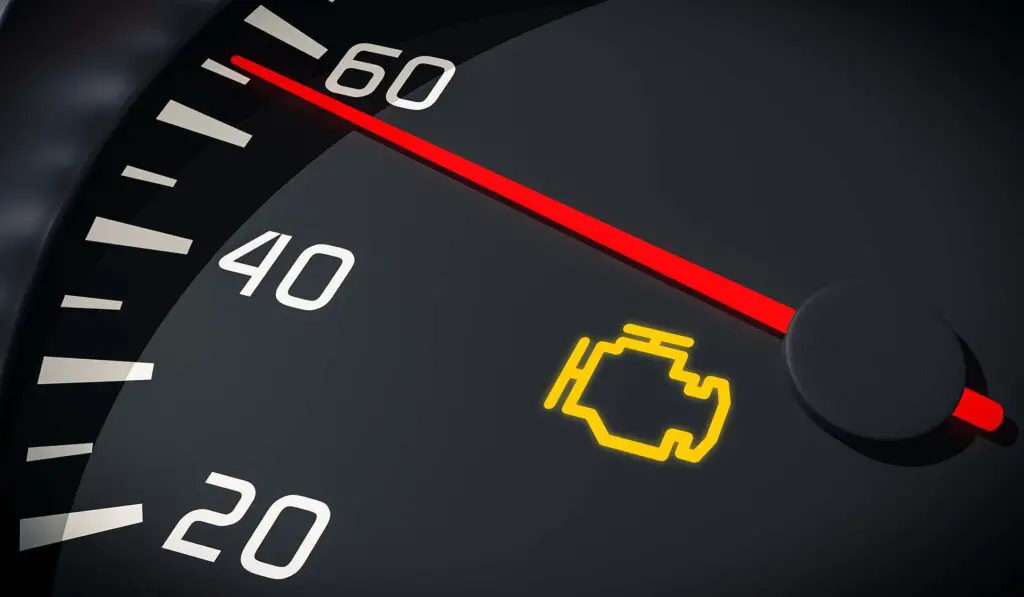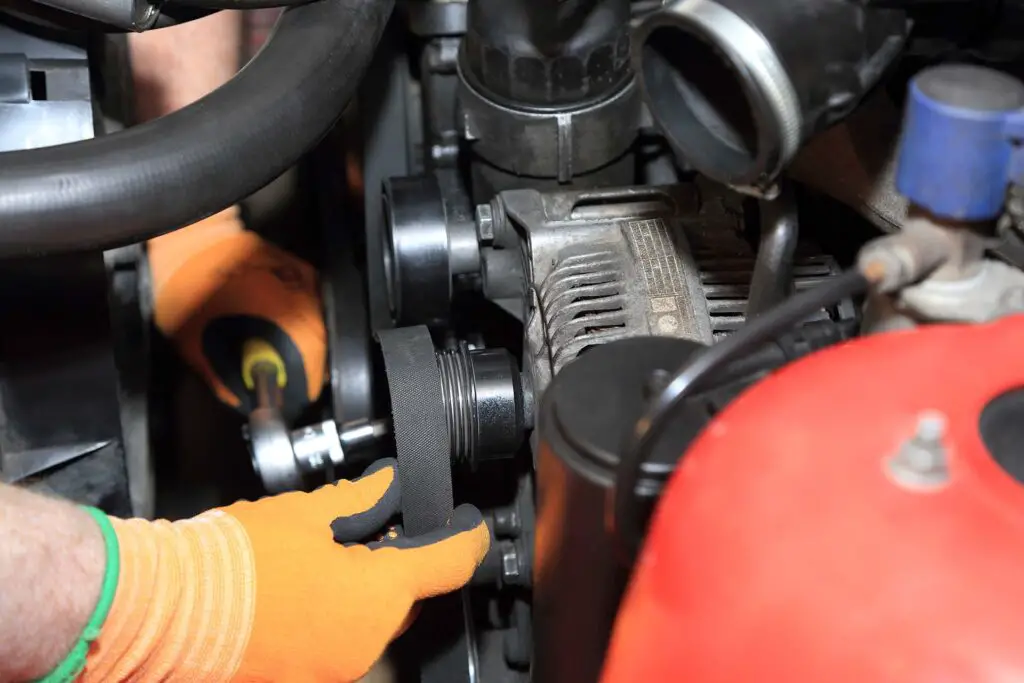Revving engines and the smooth hum of a vehicle in motion – there’s more going on under that hood than meets the eye. If this aspect is giving you any problems, you’re probably wondering how to replace a serpentine belt. Here’s the ultimate guide that will help you take it step by step, ensuring that the intricate dance of your four-wheeler’s parts runs smoothly.
The replacement process is straightforward after gathering essential tools and locating the belt diagram. It involves releasing tension, removing the old belt, and installing the new one. After you’re done, regular inspection and maintenance can extend the belt’s typical 60,000-100,000-mile lifespan.
What is a Serpentine Belt?
The serpentine belt, as its name suggests, slithers its way through various pulleys in the engine bay. This robust performer is more than just a vehicle component – it’s a lifeline. By drawing power from the engine’s crankshaft, it rotates accessory pulleys, bringing to life crucial vehicular systems.
From energizing your alternator to ensuring that cool breeze on a hot day through the air conditioner, it’s a multitasker. For some vehicles, it even steps in to manage the water pump, vital for the cooling system. Here’s an overview of the components powered by this crucial part of the engine bay:
| Component | Purpose |
| Alternator | Generates electricity to power the vehicle’s electrical components |
| Power steering pump | Facilitates easier steering by assisting the steering mechanism |
| Air conditioner | Regulates cabin temperature, providing cool air on demand |
| Water pump | Circulates coolant and maintains optimal engine temperature |
It’s clear by now that this component has a pivotal role in any vehicle’s engine system. A little bit of care and maintenance now can pave the way for smoother rides ahead. So, let’s look at the signs telling you it’s in dire need of replacement.

Signs Your Serpentine Belt Needs Replacement
It’s one thing to have knowledge about this integral part, but it’s another to spot the tell-tale signs that it’s crying out for a replacement. Timely recognition and intervention can make all the difference in ensuring the prolonged health of your vehicle.
Now, you might wonder – how much does it cost to replace a serpentine belt? The good news is, it’s often not too hard on the wallet, typically hovering a bit over the $100 mark. However, letting those signs slide without swift action? That’s when you might find yourself digging deeper into your pockets for expensive repairs that could’ve been easily avoided.
Here’s how to know it’s time for replacement:
Physical Signs – Cracks, Fraying, Glazing or Missing Chunks
Just as with any piece of machinery, signs of wear and tear emerge over time. Regular inspections might reveal hints like cracks or fraying, early markers of fatigue. A shiny, glazed appearance can denote the inability to grip pulleys as effectively. Last but not least, if you see any missing chunks, this is a strong hint that it’s time for a swift replacement.
Audible Signs – Squealing or Chirping Noises
Your four-wheeler possesses its unique language of alerting you to possible issues. Those unexpected squealing or chirping sounds when turning on or driving? These are often clues telling you that the serpentine belt is slipping on a pulley.
System Failures – Battery Light On, Overheating, Power Steering Issues
A compromised part affects the systems it’s responsible for. The lit-up battery symbol on your dashboard might hint at a struggling alternator. Similarly, if you’re experiencing overheating, it’s likely related to the cooling process not getting the power it needs. And if maneuvering feels off? It might be tied to the component failing to provide the required power to the steering mechanism.
Tools and Materials Needed
Before diving into the whole ordeal, it’s important to gather all of the necessary tools. Proper preparation ensures a smoother workflow, minimizing the chances of mid-task hiccups. So, make sure you have the following:
- Ratchet – the main tool to tighten or loosen components, ensuring everything stays in place,
- Serpentine belt tool or breaker bar – specifically designed for tension release, these tools will help you easily remove and install the new component,
- Correct-sized socket – to pair with your ratchet or breaker bar, making sure you can grip and turn the components correctly.
Take Time to Find the Perfect Replacement
While the temptation to pick a budget-friendly, generic replacement might be strong, remember – your four-wheeler is unique. Opting for a part that’s tailored to your car’s make and model is essential, as it guarantees not only a seamless fit but also ensures optimal performance and longevity.
And when the time comes to venture under the hood, it’s important to have the right safety gear. So, get gloves to protect against burns or cuts, safety glasses to shield the eyes, and even ear protection in noisy environments. Remember, no step of the process is too trivial for safety precautions!

Preparare for the Replacement
When dealing with this problem, the question on everyone’s mind is – how much to replace a serpentine belt? As mentioned, while the part itself may not break the bank, labor costs can sometimes be a sting, typically hovering around the $60 to $70 mark. Those willing to roll up their sleeves and venture into the DIY path can save a chunk on these labor costs.
Now, if you’re willing to roll up your sleeves, then it’s crucial to start on the right foot. First and foremost, you should locate the routing diagram. This handy map, usually found in the engine bay or your vehicle’s manual, guides your path and ensures every component is in sync. If, by chance, this diagram is missing, no worries. A pencil, paper, and a keen eye are all you need to sketch out your own.

How to Replace a Serpentine Belt – Step-By-Step Guide
Swapping out this component might seem intimidating, especially given the fact that it’s an integral part of the engine bay. However, with a bit of skill and patience, it’s a pretty straightforward task.
Those willing to go the DIY route are probably wondering – how long does it take to replace a serpentine belt? For most vehicles, the whole ordeal will typically take less than an hour, which is great news. So, without further ado, let’s delve into the details.
Step 1 – Gain Access
First and foremost, ensure that the engine is turned off and has ample time to cool. Depending on your vehicle’s design, a few components might be in the way of the belt. Here’s a list of common parts you might need to shuffle around or remove for clear access:
- Air intake assembly,
- Cooling fan,
- Engine cover.
Step 2 – Release Tension
This component stays taut thanks to a tensioner. To get it off, you’ll need to ease that tension. With your trusty ratchet or a specialized tool in hand, gently rotate the tensioner arm. This action releases the tension, making the removal process a breeze.
Step 3 – Remove the Old Belt
Now, with the path clear and the tension released, it’s time to remove the old part:
- Start at the topmost pulley,
- Carefully slip the part off, working your way around each pulley,
- Once free from all pulleys, gently pull the belt out of the engine bay.
Step 4 – Compare Belts
Before you proceed, it’s wise to compare the new part with the old. Lay the belts side by side, checking that they match in length and the number of ribs. This quick check ensures that the new component fits just as seamlessly as the old one, maintaining your engine’s efficiency.

Step 5 – Install the New Belt
Once you’ve ensured that the new component matches the old one, it’s time to set it in its place. Here’s how:
- Begin with the lowest pulley and work your way up,
- Reference the routing diagram as a guide,
- Ensure that the belt wraps around each pullet smoothly,
- Make sure the component sits snugly in the grooves of each pulley.
Step 6 – Restore Tension
With the new component placed correctly, it’s time to let the tensioner do its job. Gently release the tensioner arm, letting it apply the necessary tension. The newly installed component should now be held firmly, ready to power the engine’s accessories.
Step 7 – Double-Check the Components
After installing and setting the tension, give everything a thorough look-over. It’s vital to ensure that the new part is well-seated across all pulleys and hasn’t misstepped out of its track. This can give you peace of mind knowing that your vehicle’s engine system will operate smoothly.

What to Do After the Installation Is Completed
Once you’ve wrapped up the installation, don’t rush to hit the road just yet. First and foremost, turn on the engine and watch the belt as it runs. It should be moving smoothly without any wobbles or misalignments.
Additionally, tune in to the sounds of the engine. While a soft hum is standard, any unusual noises like squeals or rattles could be red flags pointing to improper installation. It’s always better to spot issues now, in the comfort of your garage, than during a drive on the famous routes in the US.

Tips for Maintenance and Longevity
While these crucial components typically have a lifespan ranging between 60,000–100,000 miles, it’s possible to optimize their duration with some careful attention. First, it’s vital to maintain a clean engine environment at all times.
Oil or other fluid leaks can shorten the lifespan of the belt. Thus, be vigilant and address any leaks promptly. Regular inspections for signs of wear, such as cracks or fraying, can also help identify potential issues before they escalate.
Wrapping It Up – The Road Ahead
Taking the initiative to replace and care for essential components can feel rewarding, not to mention the savings in your pocket. Keeping a close eye on the health and function of your vehicle’s belt system ensures a smoother drive and fewer unexpected pit stops. So, next time you’re under the hood, give that belt a quick glance and pat yourself on the back for a job well done.
FAQ
How Long Does a Serpentine Belt Usually Last?
A serpentine belt usually lasts between 60,000–100,000 miles, though its longevity can vary based on driving conditions and overall vehicle maintenance.
What Happens if My Serpentine Belt Breaks While Driving?
If the serpentine belt breaks while driving, multiple engine components might stop working, leading to immediate consequences like the engine overheating, power steering failure, and a dead battery.
Is Replacing a Serpentine Belt a Task Suitable for Beginners?
Replacing a serpentine belt is a straightforward task, but while it’s doable for beginners, it’s essential to approach the job with thorough research and detailed instructions.








